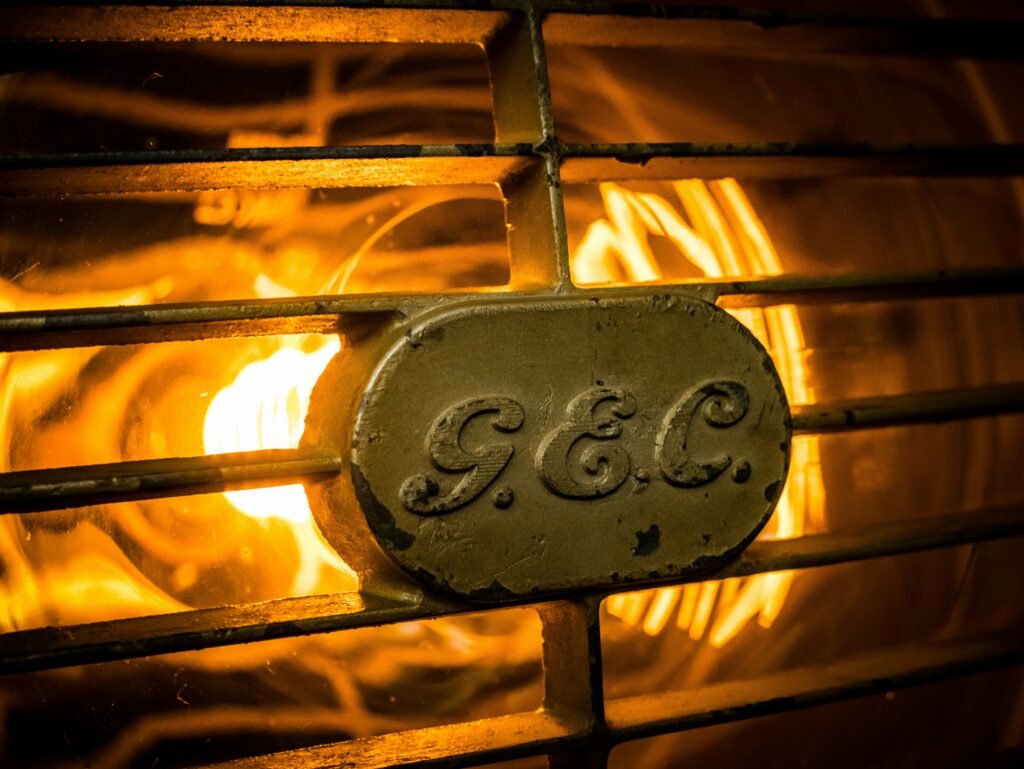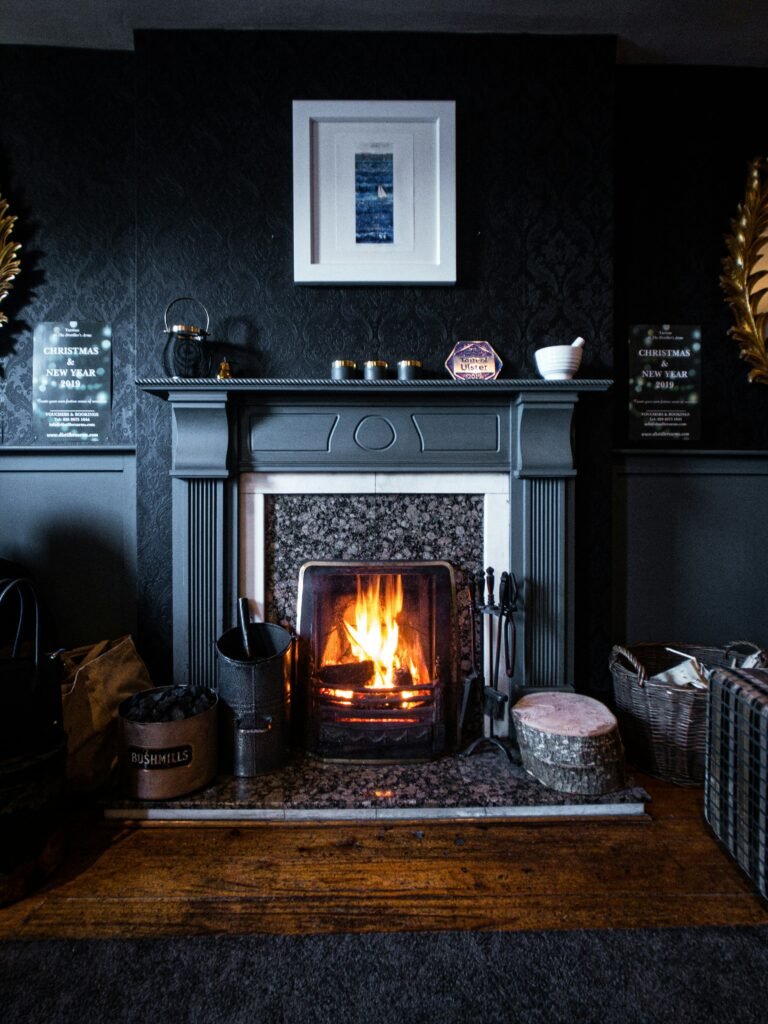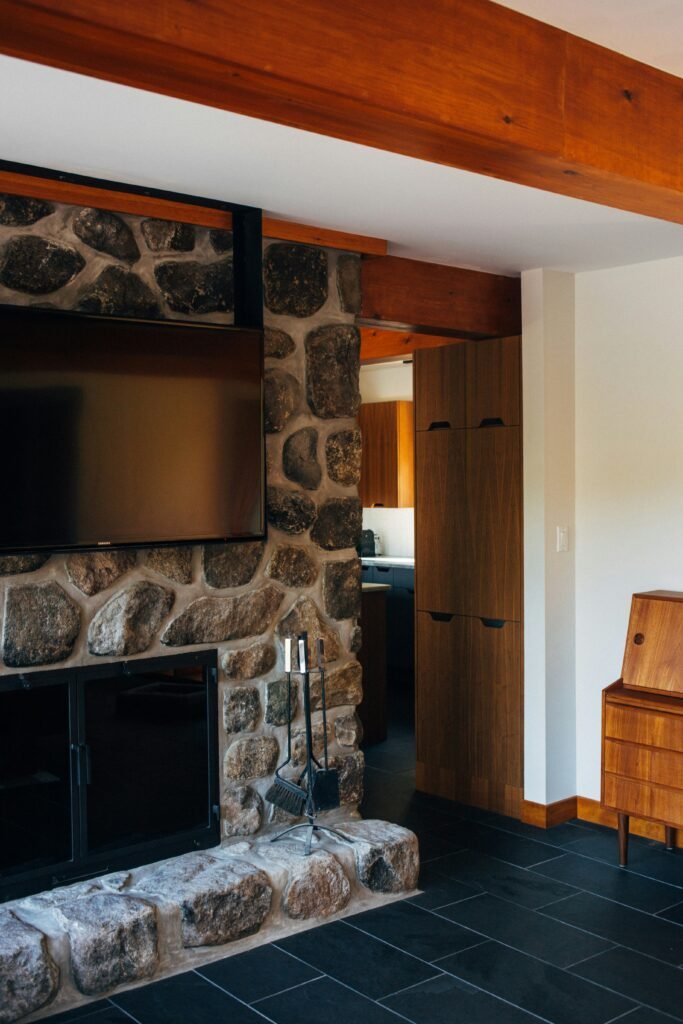Are you tired of your fireplace heater not providing enough warmth during those chilly winter nights? Look no further! In this article, we will explore the importance of choosing the right fireplace heater capacity to ensure maximum comfort and efficiency for your home. Whether you have a small cozy living room or a large open space, finding the perfect size heater will make all the difference. So, sit back, relax, and let us guide you through the process of optimizing your fireplace heater capacity.
Factors to Consider
Room Size
When choosing a fireplace heater, one of the most important factors to consider is the size of the room. A small fireplace heater may not be able to effectively heat a large room, while a large fireplace heater in a small room may be overwhelming. Measure the dimensions of your room and take the square footage into consideration when determining the ideal capacity for your fireplace heater.
Insulation
The level of insulation in your home can greatly impact the effectiveness of a fireplace heater. Well-insulated homes will retain heat better, requiring a lower capacity fireplace heater. On the other hand, poorly insulated homes may require a higher capacity heater to compensate for heat loss. Take into account the insulation in your walls, windows, and doors when calculating the capacity of your fireplace heater.
Climate
The climate of your location also plays a role in determining the ideal capacity for a fireplace heater. Colder climates will require a higher capacity heater to combat the lower temperatures, while milder climates may allow for a lower capacity heater. Consider the average winter temperatures in your area when choosing the right fireplace heater for your home.
Usage
Another factor to consider is how you plan to use your fireplace heater. If you intend to use it as the primary heating source for a room, you may need a higher capacity heater. However, if you are only looking to supplement the existing heating in a room, a lower capacity heater may suffice. Determine the purpose and usage of your fireplace heater to make an informed decision on capacity.
Calculating Fireplace Heater Capacity
BTU Calculation
BTU, or British Thermal Unit, is a unit of measurement used to quantify the amount of heat energy required to raise the temperature of one pound of water by one degree Fahrenheit. When calculating the capacity of a fireplace heater, BTUs are used to determine the amount of heat output needed to effectively heat a room.
Conversion Factors
To calculate the required BTU capacity for your fireplace heater, multiply the square footage of your room by the desired temperature rise and the insulation factor. The insulation factor accounts for the level of insulation in your home and ranges from 1 to 2.5. By using the proper conversion factors, you can accurately determine the ideal BTU capacity for your fireplace heater.

This image is property of images.unsplash.com.
Finding the Ideal Capacity
Matching BTU Output to Room Size
To achieve optimal heating, it is important to match the BTU output of your fireplace heater to the size of your room. As a general rule of thumb, you’ll need approximately 20 BTUs per square foot of space. For example, a 200-square-foot room would require a fireplace heater with a BTU output of around 4,000 BTUs. By ensuring the capacity matches the room size, you can maximize the efficiency of your fireplace heater.
Considering Insulation and Climate
Remember to take into account the insulation and climate factors previously discussed when determining the ideal capacity for your fireplace heater. If you have poor insulation or live in a colder climate, you may need to adjust the BTU output accordingly. Conversely, well-insulated homes in milder climates may require a lower BTU capacity to achieve optimal heating.
Accounting for Additional Heating Sources
If you have other heating sources in the room, such as central heating or radiators, you may be able to reduce the BTU capacity of your fireplace heater. Consider how these other heating sources contribute to the overall warmth of the room and adjust the capacity accordingly. This will prevent overloading the space with excessive heat.
Determining Ideal BTU Range
After taking all the factors into consideration, it is recommended to determine the ideal BTU range for your fireplace heater. This range allows for flexibility in adjusting the heat output based on changing conditions or personal preferences. By selecting a fireplace heater within this range, you can ensure optimal heating and comfort in your room.
Choosing the Right Fireplace Heater
Different Types of Fireplace Heaters
When it comes to choosing a fireplace heater, there are several different types to consider. The most common types include electric, gas, and wood-burning fireplace heaters. Each type has its own advantages and disadvantages, so it is important to carefully evaluate your needs and preferences before making a decision.
Electric fireplace heaters are easy to install and operate, providing instant heat with the flip of a switch. They are often portable and do not require any ventilation. Gas fireplace heaters are efficient and offer a realistic flame effect, but they may require professional installation and access to a gas line. Wood-burning fireplace heaters provide a traditional and cozy ambiance, but they require ongoing maintenance and may not be suitable for all homes.
Efficiency Ratings
When selecting a fireplace heater, it is important to consider its efficiency rating. Efficiency is measured by the percentage of heat produced compared to the amount of fuel consumed. A higher efficiency rating means the fireplace heater will provide more heat with less fuel, which can result in cost savings and reduced environmental impact. Look for fireplace heaters with high efficiency ratings to maximize heat output while minimizing energy consumption.
Safety Features
Safety should be a top priority when choosing a fireplace heater. Look for models that have safety features such as automatic shut-off switches, cool-touch exteriors, and protective screens to prevent accidental burns. Additionally, ensure that the fireplace heater is certified by recognized safety organizations to guarantee its compliance with safety standards. Taking these precautions will help to protect you and your loved ones from potential hazards.

This image is property of images.unsplash.com.
Installation and Ventilation
Proper Placement
Proper placement of your fireplace heater is crucial for efficient heating. Position the heater in a central location within the room, away from any obstructions such as furniture or curtains. This allows for maximum heat distribution and prevents the buildup of heat in one area. Additionally, ensure there is sufficient space around the fireplace heater to allow for proper ventilation and airflow.
Ventilation Requirements
Different types of fireplace heaters have varying ventilation requirements. Electric fireplace heaters typically do not require any ventilation, as they do not produce fumes or require a chimney. Gas and wood-burning fireplace heaters, on the other hand, require proper ventilation to remove combustion byproducts from the room. Consult the manufacturer’s guidelines or seek professional advice to ensure proper ventilation is in place for your chosen fireplace heater.
Professional Installation
To ensure the safe and efficient operation of your fireplace heater, it is recommended to have it professionally installed. Professional installers have the knowledge and experience to properly set up the heater, ensuring compliance with building codes and safety standards. They can also provide guidance on ventilation requirements and answer any questions you may have. Investing in professional installation will give you peace of mind and protect your investment.
Maintenance
Regular Cleaning and Inspection
Regular cleaning and inspection of your fireplace heater are essential for its proper functioning and longevity. Dust and debris can accumulate over time, obstructing the vents and reducing efficiency. Clean the heater regularly according to the manufacturer’s instructions, paying attention to the filters, grates, and any other accessible parts. Additionally, schedule periodic inspections to identify any potential issues or necessary repairs.
Filter Replacement
If your fireplace heater is equipped with a filter, it is important to replace it regularly. A clogged or dirty filter can impede airflow and reduce heating efficiency. Consult the manufacturer’s guidelines for the recommended filter replacement schedule, and be sure to use high-quality filters to maximize the effectiveness of your fireplace heater.
Professional Servicing
While regular maintenance can be done by the homeowner, some tasks are best left to professionals. Consider scheduling professional servicing for your fireplace heater on an annual basis. A qualified technician can thoroughly clean, inspect, and tune up the unit, ensuring it operates at peak performance. Professional servicing can also address any potential issues before they become major problems, saving you time and money in the long run.

This image is property of images.unsplash.com.
Energy Efficiency Tips
Sealing Air Leaks
To optimize the energy efficiency of your fireplace heater, it is important to seal any air leaks in your home. Check for gaps around windows, doors, and vents, and use weatherstripping or caulk to close them. By preventing drafts and keeping the warm air inside, you can reduce the workload on your fireplace heater and lower your heating costs.
Insulating the Room
In addition to sealing air leaks, proper insulation can significantly improve the energy efficiency of your fireplace heater. Insulate your walls, windows, and doors to minimize heat loss and retain warmth in the room. Consider adding insulation to the attic or basement, as these areas can also affect the overall temperature of your home. Quality insulation will create a more comfortable living environment and reduce the strain on your fireplace heater.
Using a Programmable Thermostat
A programmable thermostat is a valuable tool for optimizing energy efficiency. Set the thermostat to lower the temperature when you are away or asleep, and program it to increase the temperature before you return or wake up. This allows you to maintain comfort while reducing energy consumption. By integrating your fireplace heater into the programmable thermostat system, you can further enhance its efficiency and save on heating costs.
Common Mistakes to Avoid
Overestimating Capacity
One common mistake when choosing a fireplace heater is overestimating the capacity needed. It is important to accurately assess the requirements of your room and choose a fireplace heater that matches those needs. Selecting a heater with excessive capacity can result in wasted energy and discomfort, while choosing one with insufficient capacity may leave you feeling cold and unsatisfied. Take the time to calculate the appropriate capacity based on the factors discussed earlier to avoid this mistake.
Neglecting Insulation
Another mistake to avoid is neglecting the insulation of your home. Even if you have chosen a fireplace heater with the correct capacity, poor insulation can compromise its efficiency. Invest in quality insulation to create a well-insulated and energy-efficient living space. This will not only enhance the performance of your fireplace heater but also contribute to overall energy savings in your home.
Improper Ventilation
Improper ventilation is a significant mistake that can have serious consequences. Gas and wood-burning fireplace heaters require proper ventilation to safely remove combustion byproducts from the room. Failing to ensure adequate ventilation can result in the buildup of harmful gases, such as carbon monoxide, which can be life-threatening. Always follow the manufacturer’s guidelines and consult a professional if you are unsure about the ventilation requirements of your fireplace heater.
Additional Heating Solutions
Supplementing with Space Heaters
While fireplace heaters are a great source of warmth, they may not provide enough heat for larger areas or multiple rooms. In such cases, consider supplementing your heating system with space heaters. Space heaters can be placed strategically to provide targeted warmth where it is needed most. Remember to select energy-efficient models and use them responsibly to avoid safety hazards.
Using Ceiling Fans
Ceiling fans can be a valuable addition to your heating strategy. By reversing the direction of the fan blades, you can circulate warm air that has risen to the ceiling back down into the room. This helps to distribute heat more evenly and eliminate cold spots. Ceiling fans are a cost-effective and energy-efficient way to enhance the performance of your fireplace heater.
Considering Zoned Heating
If you have a larger home or multiple areas with different heating requirements, zoned heating may be a viable option. Zoned heating allows you to divide your home into separate zones and control the heating in each zone independently. This enables you to adjust the temperature according to specific needs, optimizing comfort and energy efficiency. Consult a heating professional to explore the feasibility and advantages of zoned heating for your home.
Conclusion
Choosing the right fireplace heater capacity is essential for optimal heating and comfort in your home. Factors such as room size, insulation, climate, and usage should all be taken into consideration when determining the ideal capacity. Calculating the BTU requirement, considering the insulation and climate, and accounting for additional heating sources will allow you to find the perfect balance. Selecting the right fireplace heater, ensuring proper installation and ventilation, and maintaining it regularly will ensure its efficiency and safety. By implementing energy efficiency tips and avoiding common mistakes, you can further enhance the performance of your fireplace heater. Additionally, exploring additional heating solutions, such as space heaters and ceiling fans, can provide added warmth and comfort. With careful consideration of all these factors, you can make an informed decision and enjoy the cozy warmth of a fireplace heater that perfectly suits your needs.




